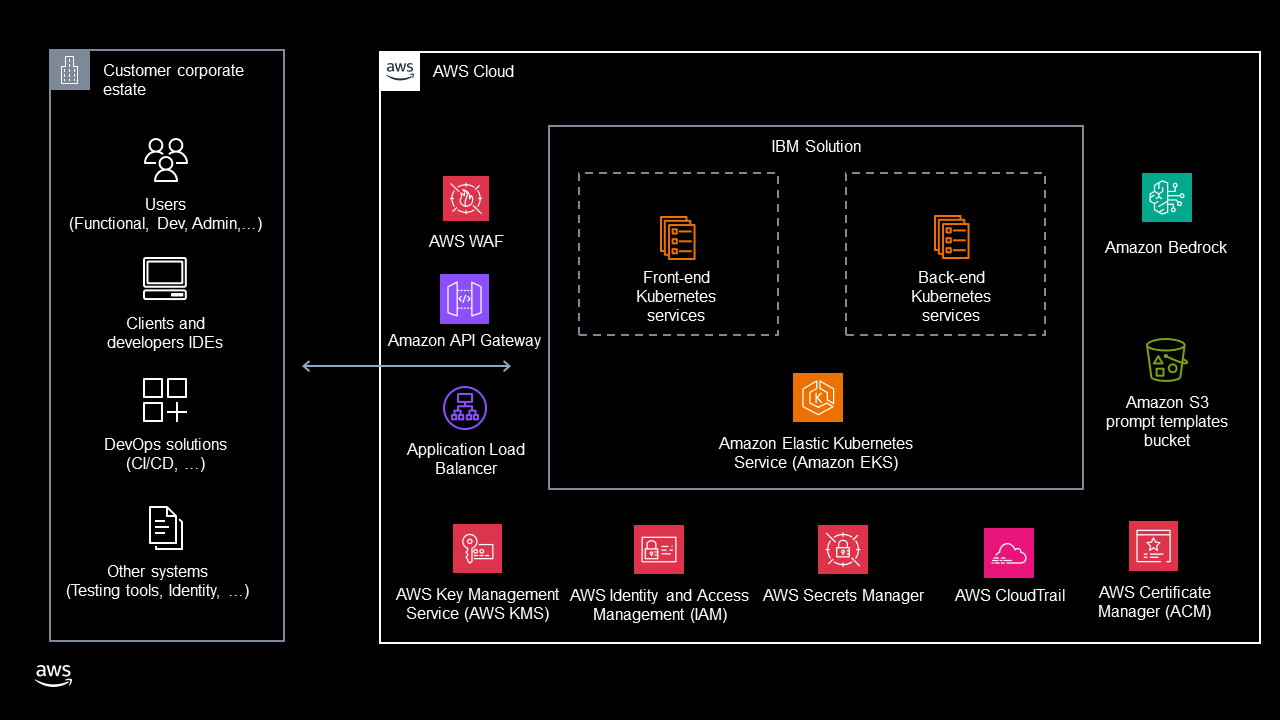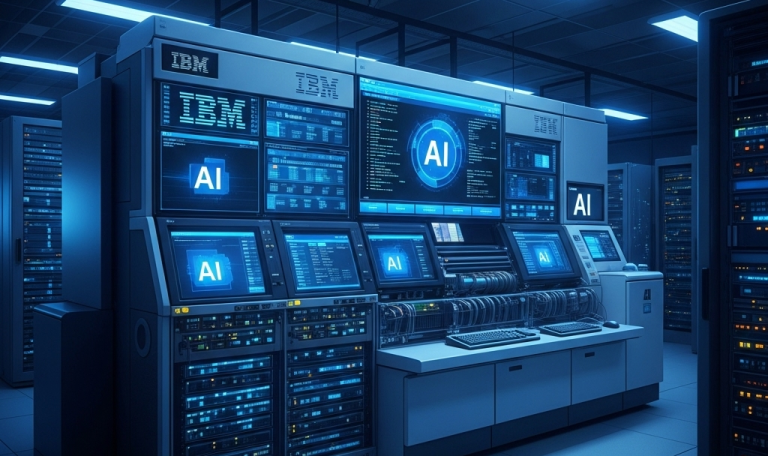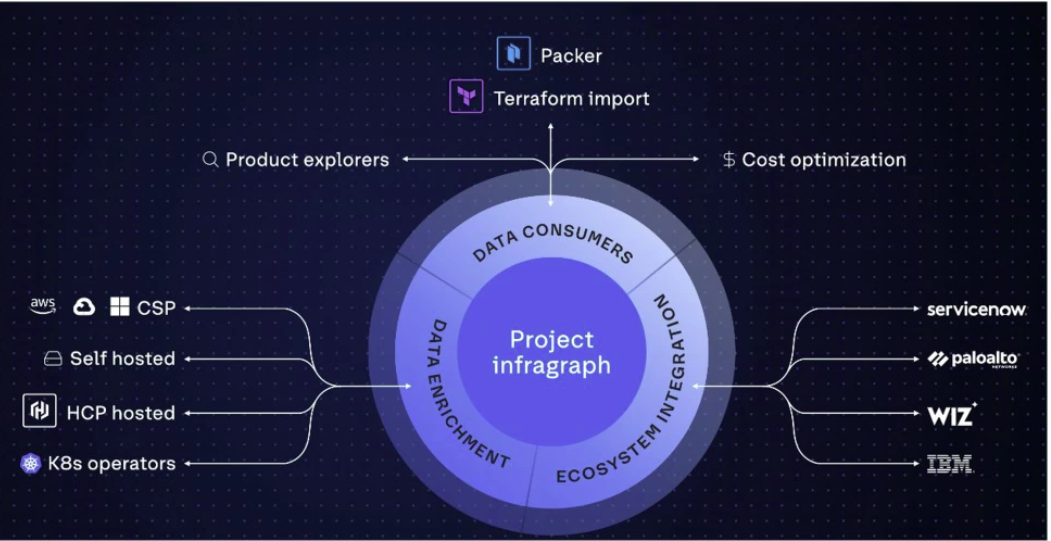IBM announced a slate of production-focused AI and infrastructure innovations at its global TechXchange event, positioning enterprises to move from AI experimentation to measurable gains in development velocity, operational resilience, and business workflow automation. The updates span agentic AI orchestration, hybrid/multi-cloud observability, mainframe operations, and AI-first developer tooling, each designed to close the adoption gaps caused by fragmented environments, data quality issues, and governance challenges common at scale.

IBM Generative AI SDLC solution architecture
Industry forecasts estimate that generative AI could unlock more than $4 trillion in economic value over the coming years. Still, many organizations struggle to operationalize AI due to siloed tools, inconsistent policy controls, and brittle integration patterns across hybrid estates. IBM’s latest portfolio updates emphasize production readiness, real-time governance, and uniform control planes that integrate across cloud, on-premises, and mainframe systems.
IBM Software SVP of Products, Dinesh Nirmal, underscored that AI productivity is becoming a force multiplier for business agility, removing bottlenecks across the technology lifecycle. He noted that IBM’s enhancements elevate developer productivity, strengthen agentic orchestration, and deepen infrastructure intelligence—advancing the technical foundation required for enterprise-scale outcomes.
Enhancing Trust and Performance in Agentic Orchestration
At the center of IBM’s agentic AI strategy is watsonx Orchestrate, which now aggregates more than 500 tools and customizable domain-specific agents from IBM and partners. Orchestrate is designed to be tool-agnostic and environment-agnostic, enabling consistent deployment, policy enforcement, and lifecycle governance across heterogeneous stacks.

A notable upcoming capability is AgentOps, a built-in observability and governance layer for agentic systems that provides complete lifecycle transparency. With real-time monitoring and policy-based controls, AgentOps is designed to ensure agents operate reliably and securely, with auditable behavior from trigger to outcome. Consider a common HR onboarding workflow. Without AgentOps, teams often discover policy or data handling issues only after the fact. With AgentOps, every action is monitored against policy, and anomalies are flagged in real-time, allowing for immediate corrective actions, producing compliant and predictable onboarding from start to finish.
To reduce friction for both developers and business teams, IBM is also simplifying agent setup and coordination:
- Agentic Workflows: Instead of brittle scripts that fail under scale or change, teams can adopt standardized, reusable processes that orchestrate multiple agents and tools in a consistent, durable manner. This reduces maintenance overhead and enhances reliability for end-to-end automation.
- Langflow integration: Non-specialist teams can use Langflow’s drag-and-drop builder to design, connect, and deploy agent flows quickly—often compressing build times from hours to minutes and broadening the scope of who can safely participate in automation design.
IBM is extending agentic capabilities to the mainframe with watsonx Assistant for Z. These IBM Z agents shift operations from reactive troubleshooting to proactive, intent-driven management. They maintain conversational context, automate runbooks, and respect security/compliance guardrails intrinsic to Z environments. Paired with the latest IBM z17 platform, the refreshed experience aims to streamline operational workflows and raise operator productivity for core systems that demand high levels of assurance.
Building the Trusted Context Layer for Agents and Operations
Following its acquisition of HashiCorp, IBM introduced Project infragraph, an intelligent, unified control plane for observability intended to replace fragmented toolchains and manual, spreadsheet-driven processes common in hybrid and multi-cloud environments. As estates expand, tool sprawl creates information silos that slow response and complicate risk management.

With infragraph, organizations gain a consolidated, near-real-time view of infrastructure resources and security posture, spanning what’s managed within HashiCorp Cloud Platform (HCP) and beyond. In practical terms, when a critical CVE emerges, teams no longer need to orchestrate mass email threads and hand-maintained CSV trackers. Infragraph provides a single source of truth to identify affected components, verify remediation, and visualize exposure across resource clusters (e.g., containers within a VPC), thereby reducing the mean time to assess and resolve risk.
Looking forward, IBM plans for Infragraph to connect HCP with broader IBM software, including Red Hat Ansible and OpenShift, watsonx Orchestrate, Concert, Turbonomic, and Cloudability. The vision is a consistent data and policy model unifying infrastructure, security, and applications, providing agents and operators with trusted, contextual telemetry to act faster and with higher confidence.
Accelerating Developer Productivity With an AI-First SDLC
IBM previewed Project Bob, an AI-first developer system designed to collaborate across the software development lifecycle. Where current coding assistants are largely code-completion tools, Project Bob is positioned as a task-generating, agentic collaborator that helps write, test, upgrade, and secure software across large, evolving codebases.
Project Bob coordinates across leading LLMs, including Anthropic Claude, Mistral, Llama, and IBM Granite, selecting capabilities to fit task context while preserving continuity across sessions. Key capabilities include:
- Multi-language support: Optimized today for Java, JavaScript/TypeScript, and Python, with expanded coverage for RPG, Go, C#, Rust, PHP, Kotlin, and others. This breadth targets the heterogeneous stacks typical of enterprise portfolios.
- End-to-end Java modernization: Automated upgrades, framework migrations, and multi-step refactors across monoliths and distributed services. The goal is durable modernization at scale with lower regression risk and shorter change windows.
- Agentic, context-aware execution: Coordinated coding, testing, and remediation flows that maintain state and intent across tasks, reducing context switching and handoffs that slow delivery.
- Enterprise-grade security and scale: Integrated “shift-left” vulnerability scanning, support for accelerating FedRAMP hardening, and guidance for quantum-safe cryptographic migration, embedding security and compliance patterns into day-to-day workflows.




 Amazon
Amazon